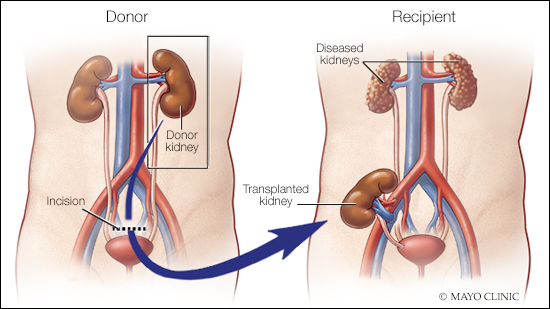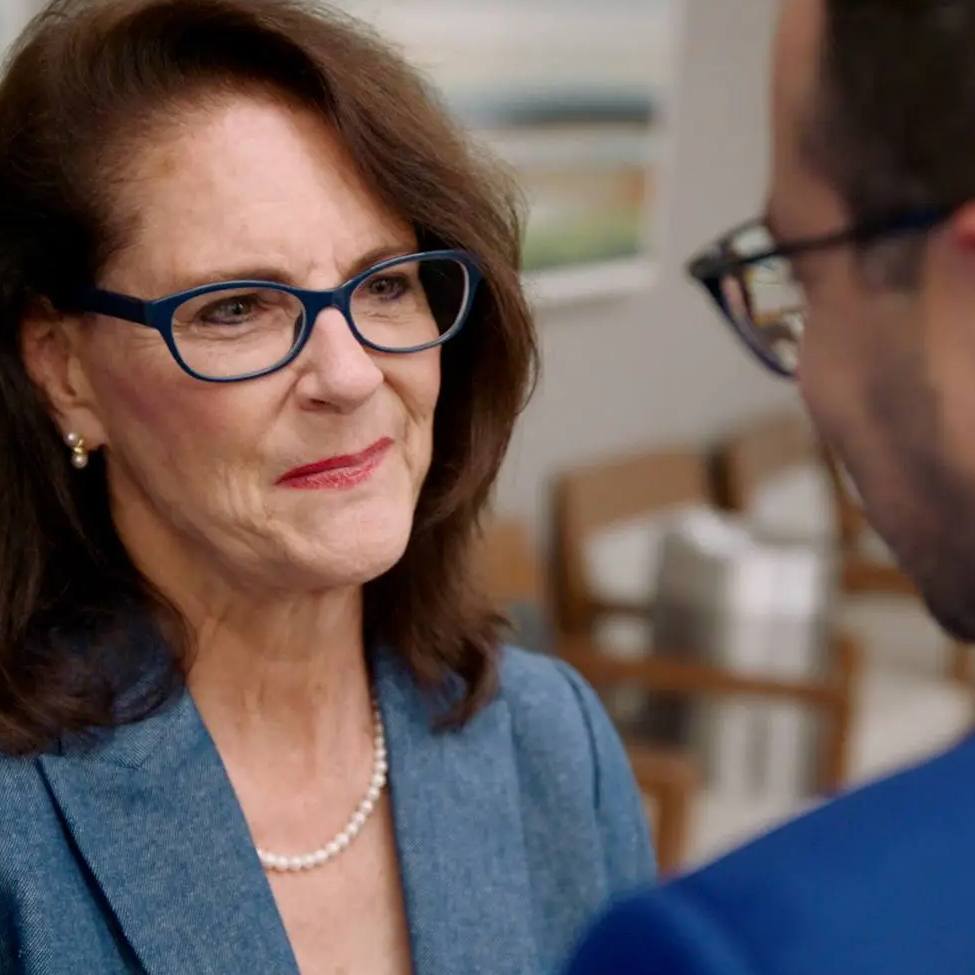-
Mayo Clinic Q and A: Living kidney donor doesn’t have to know the recipient
 DEAR MAYO CLINIC: I’ve heard of people being a living kidney donor for someone they don’t know who’s in need of a transplant. How does that work? Don’t you have to be a relative, or at least a friend, to donate a kidney?
DEAR MAYO CLINIC: I’ve heard of people being a living kidney donor for someone they don’t know who’s in need of a transplant. How does that work? Don’t you have to be a relative, or at least a friend, to donate a kidney?
ANSWER: If you’re interested in being a living kidney donor, it’s not necessary for you to be related to — or even to know — the person who receives your kidney. This can be accomplished in several ways. The first is in a nondirected donation, where the donor does not name the organ recipient. The second is a paired donation, where two or more people who are in need of a transplant trade donors.
Your kidneys are two organs, each about the size of a fist, in the back of your abdomen on either side of your spine. Kidneys remove extra fluid and waste from your body, and help control blood pressure. When a person’s kidneys no longer work, a condition called “chronic kidney failure,” a kidney transplant usually is the best treatment option. A transplant often allows people to return to a fully active life.
A kidney for a transplant may come from a deceased donor or a living donor. Kidneys from living donors tend to last longer and work better than those from deceased donors. Living kidney donations are possible because, although you have two kidneys, your body can work well with only one.
Many people who consider donating a kidney are family members or friends of someone who needs a kidney transplant. But that’s not always the case. Some people who want to be kidney donors do not have a certain person in mind to receive the kidney. This is a nondirected donation — sometimes called an “altruistic” or “good Samaritan” donation.
In a nondirected donation, the transplant recipient is determined by medical compatibility and need. The donor and recipient may choose to learn one another’s identity, or they may wish to remain anonymous.
Another way people donate a kidney to someone they don’t know is through paired donation. Paired-organ donation may be an option when someone wants to donate a kidney — often to a relative or friend — but the kidney is not a good match for the intended recipient. In that case, a transplant center may make arrangements for two people who need donated kidneys to trade donors, so each gets an organ that is a good match.
A nondirected living donor also may participate in paired-organ donation to help match incompatible pairs. More than one pair of incompatible living donors and recipients may be linked with a nondirected living donor to form a donation chain to receive compatible organs. In this scenario, multiple recipients benefit from a single nondirected living donor.
Nondirected living organ donation and paired-organ donation have become increasingly important in recent years to meet a growing need for organs for transplant and fill a shortage of available organs from deceased organ donors.
Donating a kidney for a transplant is a selfless act of generosity. Many people are waiting for a kidney transplant. If you are interested in becoming a kidney donor, contact a transplant center near you, or go online to the United Network for Organ Sharing for more information. — Dr. Patrick Dean, Transplantation Surgery, Mayo Clinic, Rochester, Minnesota
****************************
Related Articles
- Mayo Clinic Radio: Paired kidney donation published 2/7/19
- Mayo Clinic Radio: Living donor kidney transplant published 11/29/18
- Mayo Clinic blog inspires kidney donation published 8/30/18
- Tuesday Tips: Reasons to consider being a living kidney donor published 4/17/18
- Mayo Clinic Minute: Living donor transplants save lives published 4/12/18
- Mayo Clinic Minute: Living donor organ transplant published 4/6/17
- Consumer Health Tips: Living donor transplant published 4/5/17







